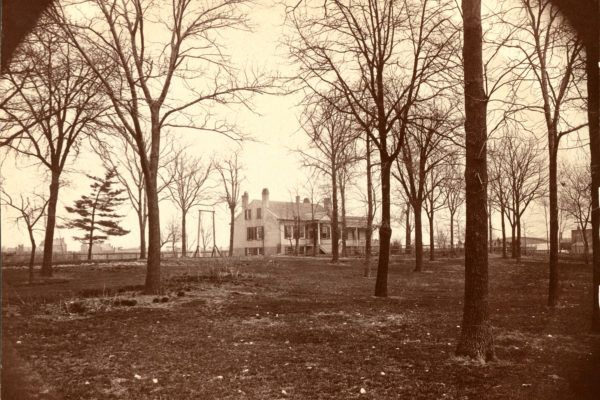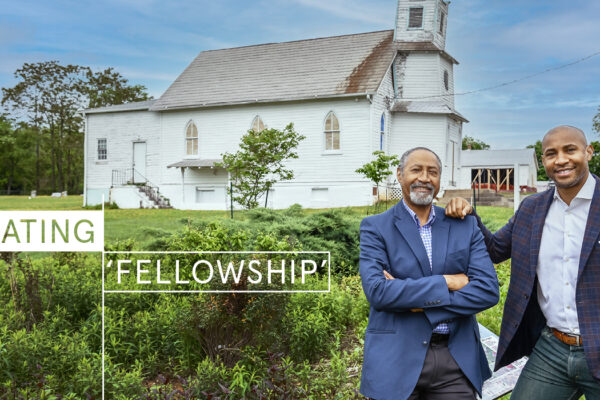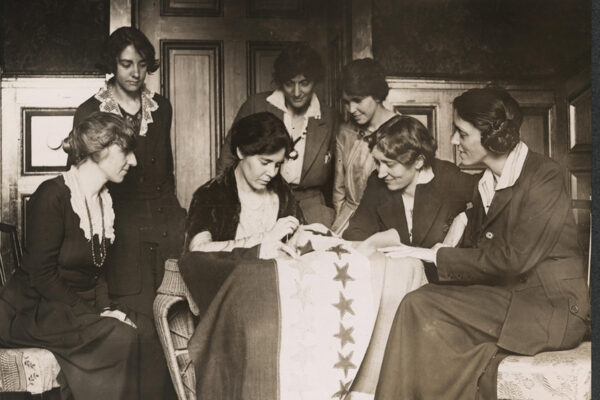Judge David C. Mason, JD ’83, has seen plenty in his more than 30 years as a judge in Missouri’s 22nd circuit court. He has presided over thousands of cases and made just as many decisions. He also has taught or mentored hundreds of law students as an adjunct professor at Washington University School of Law. And he has received numerous accolades and honors.
But a day in June left him searching for words. On June 19, Juneteenth, the Freedom Suits Memorial — a 20-foot-tall sculpture created by artist Preston Jackson commemorating slaves who sued for their freedom in Missouri in the early part of the 19th century — was dedicated on the east lawn of the Civil Courts Building in downtown St. Louis. And among the politicians, historians and onlookers there for the dedication, in the newly named Freedom Plaza, was Mason.

The judge has been one of the key figures for more than two decades in pushing for the preservation, scholarship and memorializing of a cache of old documents found in the late 1990s in the state archives in the basement of the old Globe-Democrat building in downtown St. Louis. Known as the Freedom Suits, they were the court documents of approximately 333 slaves, men and women, who sued for their freedom from 1814 to 1860 under a Missouri state supreme court precedent that said “once free, always free.” Specifically, it meant that if a slave was taken to live in a territory or state where slavery was not allowed, at that point the slave became a free person even if he or she later returned to a slave state, such as Missouri.
“I don’t know if the appropriate words can be found in an English dictionary,” Mason said in describing his reaction the day the sculpture was unveiled. “I felt in one part, my baby is born. In another, isn’t this wonderful how St. Louis has shown up?
“But the most important feeling I had was being able to give voice to all of those whose stories had literally been in a dustbin of history, just totally forgotten,” he says. “Now every morning you can walk past this statue and look at the names engraved on the base of it — the names of those who stood in front of a white judge and a white jury and knew that they had the courage to address them.
“Now, their names have been spoken.”
Preserving the past
“History,” says David Konig, emeritus professor of law and history, “is the result of countless tidbits that have to be connected and aligned the right way.”
And Konig was, in addition to Mason, among a connection of WashU faculty, students and scholars who played an important role in preserving not only the documents but also the stories of the Freedom Suits. “From the very beginning, this project was the product of cooperation and coalition,” Konig says, “as well as the volunteering of time, money and effort by many, many people to keep it moving.”
“History is the result of countless tidbits that have to be connected and aligned the right way.”
David Konig, emeritus professor of law and history
Konig cites a perfect storm of historical scholarship and expertise coming together more than 20 years ago, led by Wayne Fields, the Lynne Cooper Harvey Chair Emeritus in English in Arts & Sciences. Fields, along with Peter Kastor, professor of history and American culture studies, and WashU alumni Kenneth Winn, MA ’79, PhD ’85, who was Missouri state archivist, and Robert Moore, MA ’96, PhD ’03, historian at the National Park Service. Along with Konig, they each brought an expertise and enthusiasm, not to mention knowledge of how to obtain grants and other funding sources, to this cache of documents that had been folded, tied into bundles and shoved into boxes.
And WashU students were a part of the scholarship, too. “For years, WashU students worked downtown with these records, laboriously unwrapping them, then flattening them and adding them to a saline solution to de-acidify the paper,” Konig says. “At first, it was really a conservation effort.”
It was also an introduction to historical research for the students, as “they were getting into the weeds,” he says. “They were not only rescuing the documents, but reading these cases, too.
“And I use the term ‘rescue’ literally,” Konig says. “The students, Wayne Fields, Peter Kastor and Kenneth Winn helped make them available and helped preserve the past.”
Finding meaning in the memorial

Mason, himself a descendant of slaves, knows exactly what it’s like to hold those documents in his hands. “Seeing the signatures of these enslaved people who were just like my ancestors, and knowing the risks they took,” he says, “I almost felt compelled to dare to do everything I could to bring their voices to light, and to bring their names out in a memorial. It really drove me.”
Konig says one of the proofs of the memorial that now stands is the “pen is mightier than the sword.”
As an example, he cites the Dred and Harriet Scott petition, which was, at the time of its filing in 1846, just another one of the Freedom Suits. No one, he says, had any idea of the larger impact it would have or that their fight would last a decade and go all the way to Supreme Court, providing the spark that would start the Civil War.
“The petitioner has to sign the document,” Konig says. “And as Dred Scott was illiterate, you had this clerk writing down ‘Dred Scott’ and then Scott making his mark, an ‘x,’ underneath the name. Those two pen strokes were probably more significant historically than the cannonade attack on Fort Sumter. And so to hold that paper, to show students that history is made up of a lot more than cannon fire, that it’s actually something assembled, organized and put to work by ordinary people, that’s something.”
And now the names of those ordinary people are memorialized forever. For Mason, it is his hope that anyone who walks into the courthouse in downtown St. Louis on any given day stops to look, read the names on the base of the memorial, and then reflect on them.
“If they are lawyers, judges or jurors, I hope they take away from it that the law is there to protect even the lowest people on the rung of society,” Mason says. “I hope that they walk into court with a sense of their responsibility of making sure that any person who’s in front of them — juror, lawyer, judge, whomever — that they must always remember that the protection of the law is there for everyone.”
Meanwhile, the work telling the story of the Freedom Suits continues. “There’s still a lot of digging into old family law files,” Mason says, “looking for potential connections and references. There may be other plaintiff names to be discovered.”
And now that the Freedom Suits Memorial is up, the St. Louis Bar Foundation would like to establish a virtual learning center so that scholarship around the Freedom Suits can continue and families who might be interested can find out more about a particular case.
“We would love to know more about particular families involved in the Freedom Suits,” Konig says. “Yes, there was widespread success, but truthfully, once they got their freedom, they didn’t advertise it. They didn’t want to create a backlash.”
For Mason, the Freedom Suits Memorial reminds him that there’s more work to be done, yet there was a time when fairness, equity and justice prevailed in a court of law against all odds. It also is a reminder to never give up on that ideal.
“My grandmother was instrumental in my life, and she always told me that my being Black has to mean something,” Mason says. “I feel I have an obligation to tell the story of what they went through in life, and what it should mean for us today. To always keep in mind that I stand on some strong but scarred shoulders.”



